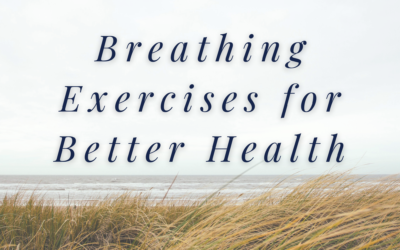-
Pingback: A Simple Guide to Meditation - Ohio Sleep Treatment
Different Types of Meditation
Our world, our lives are filled with stress. The day-to-day can be jammed packed with responsibilities, meetings, relationships, environmental stressors…even a pandemic. Meditation provides time for relaxation and awareness in the stressful world we live in. Research has shown that meditation has the potential for more than just temporary relief from stress, and whether you consider yourself a beginner or an expert, meditation will continue to benefit your overall well being. There are hundreds of types of meditation from different traditions, cultures, and religions, but there is no “best” or “most effective” type. Choosing the meditation that is right for you depends on what works for your lifestyle and goals. Keep reading as we take you through some different types of meditations and techniques to find what works best for you!
Guided vs. Unguided
When beginning your meditation journey choosing between guided and unguided meditation can help you get started. Guided meditation is when a teacher guides you through the steps of the practice, either in person or through meditation apps and videos. This is particularly useful for beginners to get the most out of the experience. Unguided meditation or “silent meditation” is done alone, without a teacher explaining the process. This involves simply sitting quietly for a set period of time.
Once you have chosen between guided or unguided meditation, you can find which technique works best for you! Below are six different types of meditation you can try TODAY!
6 Types of Meditation:
1) Focused Attention
This form of meditation concentrates entirely on whatever it is that you are doing. We often admire the work of athletes, musicians, chess-players and more, but forget that in order to succeed in life we must also be able to focus on one task at a time. Focused attention meditation is the opposite of multitasking. It uses an object of focus, like the breath or drinking a cup of tea, to maintain awareness. You may notice how each breath feels as you inhale and exhale, or the warmth and aroma of the tea in your hands and let your attention lay there. If you find your mind starting to wander, simply return to your object of focus.
2) Body Scans
This technique is meant to sync the body and mind by performing mental scans from the top of the head to the end of your toes. It encourages you to scan your body for areas of tension and allow it to release. Some forms of body scan meditation require you to tense and then relax your muscles. Others encourage you to visualize a wave drifting through the body to release tension. This form of meditation promotes calmness and relaxation and may also help with sleep.
3) Noting/ Mindfulness
This technique invites you to pay attention to your thoughts as they pass through your mind, “noting” what’s distracting you and letting go. During meditation we often get caught up in thoughts or emotions (from past or future events) that we’ve lost our awareness on the breath (or whatever your object of focus is). By noting these thoughts and emotions in a non-judgemental way, it allows you to create space and learn to let them go.
4) Mantra
Similar to focused attention meditation, this technique focuses on a mantra (which can be a syllable, word, or phrase). The subtle vibration of the repeated mantra (like the popular “Om”) allows you to experience deeper levels of awareness and a deeper state of meditation. Many people enjoy this form of meditation because they find it easier to focus on a word than the breath. Those who enjoy mantra meditation find a stronger connection to positive human qualities such as compassion and confidence.
5) Chakra
This type of meditation focuses on keeping the body’s core chakras (centers of energy) open, aligned, and fluid. There are seven core chakras; Root Chakra (found at the base of your spine), Sacral Chakra (found below the navel), Solar Plexus Chakra (found above your navel in your stomach), Heart Chakra (located at the center of the cardiovascular system), Throat Chakra (located near the thyroid glands), Third Eye Chakra (located above the junction of your eyebrows), and Crown Chakra (which sits on the top of your head). Blocked or imbalanced chakras can cause uncomfortable physical and mental symptoms. By performing specialized forms of meditation targeting each of these chakras, you can clear and balance your chakras.
6) Visualization
This technique invites you to replace your object of focus with a mental image. You can close your eyes and imagine a beautiful lake, mountains or a familiar landscape. It is important to imagine a scene vividly and use all five senses with as much detail as possible. This form of meditation can be difficult for some people, so having a teacher to guide you may be easier. Visualization meditation uses a creative aspect of the mind for positive transformation. Many people use this to boost their mood, reduce stress and promote inner peace.
With these different types of meditation techniques we hope you can find what works best for you and your meditation goals. Again, there are many more meditation techniques than the ones we mentioned, so please check out our resources below to explore more! Also, be sure to check out our other article titled, “A Simple Guide to Meditation” to learn more on this topic!
And if you enjoyed today’s article, be sure to visit our blog for more fun and educational content! You can also check out all “sleep aid” related articles geared towards providing useful tools for a better night’s sleep! Questions? Give our clinic a call at 614-396-8286 or click here to contact us online!
Written by: Alejandra Neira
Resources:
https://www.medicalnewstoday.com/articles/320392#how-long-does-it-take-to-work
https://mindworks.org/blog/different-types-meditation-technique/
https://www.headspace.com/meditation/techniques
https://www.healthline.com/health/mental-health/types-of-meditation#visualization-meditation



